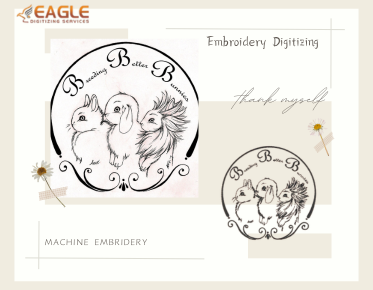Understanding the Intricacies of Embroidery Digitizing
Embroidery digitizing is a fascinating process that transforms artwork into a digital file that embroidery machines can read. This process is essential for creating intricate and precise embroidery designs that are used in various applications, from fashion to corporate branding. The digitizing process involves several steps, each requiring attention to detail to ensure the final product meets the desired quality standards.
The first step in embroidery digitizing is to choose the right software. There are numerous embroidery digitizing software options available, each offering different features and capabilities. The software allows the digitizer to import the artwork and begin the process of converting it into a stitch file. This involves selecting the appropriate stitch types, directions, and densities to ensure the design is both aesthetically pleasing and functional.
The Art of Stitch Selection
Stitch selection is a critical aspect of embroidery digitizing. The digitizer must decide which types of stitches to use for different parts of the design. Common stitch types include satin stitches, fill stitches, and running stitches. Each type has its own characteristics and is suitable for different design elements. For instance, satin stitches are often used for borders and text, while fill stitches are used for larger areas.
Understanding Stitch Density and Direction
Stitch density refers to the number of stitches in a given area. It is crucial to get the density right to avoid issues such as puckering or thread breakage. The direction of the stitches also plays a significant role in the final appearance of the design. By adjusting the stitch direction, digitizers can create different textures and effects, adding depth and dimension to the embroidery.
Testing and Adjustments
Once the initial digitizing is complete, the design is tested on an embroidery machine. This step is vital to identify any issues that may not be apparent in the digital file. Adjustments are often necessary to refine the design, ensuring it meets the desired quality and appearance. This iterative process of testing and adjusting is what sets professional digitizers apart, as it requires a keen eye for detail and a deep understanding of the embroidery process.
Finalizing the Design
After making the necessary adjustments, the design is finalized and saved in a format compatible with the embroidery machine. This file is then ready to be used for production, whether it's for a single item or a large batch. The precision and skill involved in embroidery digitizing make it a highly valued service in the textile industry.
The Role of Technology in Embroidery Digitizing
Advancements in technology have significantly impacted the field of embroidery digitizing. Modern software offers features such as automatic stitch generation and 3D visualization, making the process more efficient and accessible. However, the expertise of a skilled digitizer remains irreplaceable, as human judgment is crucial for achieving the best results.
Choosing the Right Embroidery Digitizing Service
For businesses and individuals looking to create custom embroidery designs, selecting the right embroidery digitizing service is essential. A professional service will have experienced digitizers who understand the nuances of the process and can deliver high-quality results. It's important to consider factors such as turnaround time, cost, and customer reviews when choosing a service provider.
Conclusion
Embroidery digitizing is a complex and rewarding process that combines art and technology. By understanding the steps involved and the skills required, one can appreciate the craftsmanship that goes into creating beautiful embroidery designs. For those seeking professional assistance, Eagle Digitizing excels in providing professional embroidery digitizing services, ensuring every design is crafted with unmatched precision.


